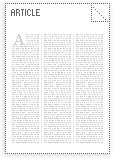Journal Club May 2017 - Suicide Risk Assessment
/Emergency physicians regularly see psychiatric patients who are having suicidal thoughts or engage in non-suicidal self-injurious (NSSI) behavior. In addition to working these patients up medically, it is part of our job to determine who needs emergent evaluation by a psychiatric provider and who is safe for discharge. This is a very important decision, as we do not want to send high risk patients home and keep low risk patients for extended periods of time while they await their evaluation. Balancing this can be difficult - oftentimes it is not obvious where a patient falls on this spectrum. We are taught various decision aids in medical school to help us risk stratify these patients - but how do they perform on emergency department patients? For this month's journal club, we looked at three papers that examine three different decision aids to help elucidate this issue.
ARTICLES REVIEWED
1. Gipson, et al. Columbia-Suicide Severity Rating Scale: Predictive Validity With Adolescent Psychiatric Emergency Patients. Pediatric Emergency Care 2015 February; 31(2): 88-94.
2. Bolton et al. Predicting Suicide Attempts With the SAD PERSONS Scale: A Longitudinal Analysis. Journal of Clinical Psychiatry 73:6, June 2012.
3. Roaldset et al. Predictive Validity of the MINI Suicidal Scale for Self-Harm in Acute Psychiatry: A Prospective Study of the First Year after Discharge. Archives of Suicide Research, 16:287-302, 2012.
BOLTON ET AL.
The goal of this paper was to examine the ability of the SADPERSONS scale in predicting suicide attempts. The study population consisted of emergency department patients that were referred for psychiatric evaluation at two large tertiary care centers in Manitoba, Canada. The two main outcomes studied were current suicide attempt (at time of presentation) and future suicide attempt (within the next 6 months). The SADPERSONS scale was found to have poor predictive ability for future suicide attempts. When compared to low risk scores (0-4), the high risk group (7-10) had poor sensitivity and positive predictive value (19.6% and 5.3%, respectively). Including patients with moderate risk scores (5-6) improved sensitivity at the cost of reduced specificity. Overall the authors conclude that the SADPERSONS scale does not accurately predict future suicide attempts.
GIPSON ET AL.
The objective of this paper was to look at the ability of the C-SSRS in predicting future suicide attempts in adolescent patients. They ended up including 178 patients aged 13-17 years old presenting to a mid-western university hospital seeking emergency psychiatric services. They followed up these patients over a one year period. They found that NSSI behavior predicted future return visits (OR 2.19) and future suicide attempts. They also found that duration of suicidal thoughts was the only part of the scale that predicted future ED visits (OR 1.67) and suicide attempts (OR 1.80). The authors conclude that lifetime history of NSSI behavior and the C-SSRS have predictive validity for suicide attempts at return visit. The conclusion needs to be taken with a grain of salt - the only part of the scale that proved to show significant predictive value was duration of suicidal thoughts. This study is limited by sample size, generalizability to patients outside of the 13-17 age range, and ability of all practitioners to accurately measure a score (there was no inter-interviewer reliability data).
ROALDSET ET AL.
FIGURE 2. ITEMS, SCORE WEIGHTS, AND SUMMARY SCORES FOR CATEGORY C. SUICIDALITY (MINI NEUROPSYCHIATRIC INTERVIEW (ROALDSET ET AL.)
The aim of this study was to look at the predictive validity of MINI suicide scale for suicidal behavior and NSSI behavior in patients following discharge from an acute psychiatric ward. This study included 307 patients discharged from a psychiatric ward at a university hospital in Oslo, Norway. Patients were screened with this scale just prior to discharge and followed up at 3, 6, 9 and 12 months. They found that at 12 months the MINI scale was a significant predictor of suicidal behavior, as these patient’s had statistically significant higher mean scores than their non-suicidal counterparts. In a sub-group analysis of patients without a history of suicide, the investigators found that this scale did not predict suicidal acts or NSSI behavior. The authors conclude that this scale is a predictor of NSSI and suicidal behavior, but further research is needed to determine the utility for use in routine screening for self harm. This study has limited application to our population in the emergency department. These patients were all discharged after inpatient treatment, so it may not be generalizable to our population. This population also had a high rate of NSSI and suicidal behavior at 12 months (37% of entire sample), which is much higher than the rate that we see in our practice.
Summary: Overall, this literature search and journal club highlighted a glaring hole in emergency psychiatric research. Currently there is no one tool that an EM physician can use to risk stratify these patients into low and high risk groups. While certain tools (such as the C-SSRS) may appear to be promising, further research is needed to determine validity across all ages and patient populations. Until a valid tool is available to us we should continue to use our gestalt and rely on our psychiatric colleagues to help us risk stratify this group of patients.
DOWNLOAD ARTICLE SUMMARIES
Written by Kevin Kelleher, MD
Edited and Posted by Jeffrey A. Holmes, MD
















